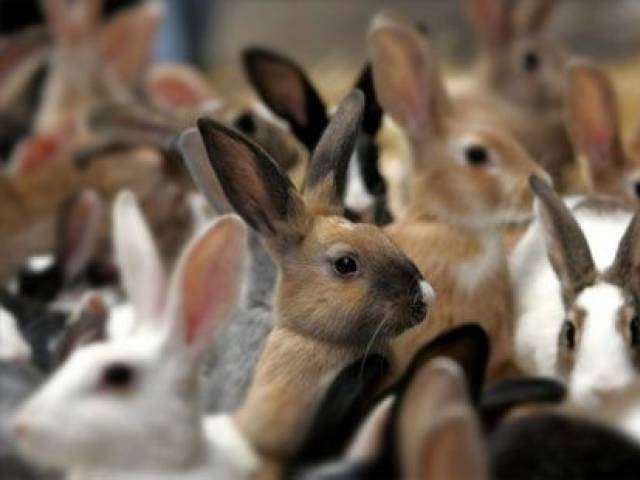Rabbit farming: a quick way to meet food demand
Rabbits need little space to live and can survive even on less food

PHOTO: REUTERS
This was observed by Hira Komal and Dr Sehar Aamir veteran experts of the University of the Agriculture, Faisalabad in a study conducted on rabbit farming, also known as cuniculture. Giving details of the study Komal told The Express Tribune that rabbits need small place to live and can survive even on less food. She said rabbits were very more docile than poultry and birds.
“There is a misconception about the meat utility of rabbits in our society as it has extra ordinary potential of calcium and phosphorus contents of its meat are more than any other meat. Besides, cholesterol fat and sodium of rabbits are less than other meats,” she said.
Dr Sehar Aamir pointed out that Pakistan was the sixth most populous country in the world. “The more the population of a country is, the more it needs sources of food and shelter,” she said.
United Airlines may get sued after potential world's biggest rabbit dies on board
“To meet the demand for food, we cannot rely on just beef and mutton. Rabbits are known as ‘micro-livestock’ and a great source of food. There is a great opportunity for rabbit farming in our country. But most of the people just keep them as pets,” she added.
“Rabbits can be grown in a small place but it should not be too congested. With a small investment, we can make house for rabbit in our house yard or on a building roof and start rearing rabbit. We can make house for rearing rabbit in two methods,” she said while explain the methods.
“To keep rabbits commercially cage method is the best. In this method, rabbits are kept in iron cages. A rabbit should be given enough space in the cage along with food armaments. Male and female rabbits should be kept separate from each other. They should keep in same rood when they need mating to produce baby rabbits,” she added.
She said green leafy vegetables including, spinach, carrots, cucumber, green grass and vegetable waste can easily be used as food for rabbits. For commercial rearing, even poultry food can be used to feed rabbits.
She said with a good management, one can achieve genetic potential of rabbits for weight and size which, of course, vary according to breed and sex. Some rabbits may grow up to size of a big cat. The average weight is 3-4 kilogrmmes.
According to the study, with rabbit farming, Pakistan can meet the ever-growing food demand and increase the income of farmers with little investment. It will also make a significant share in meat production and can have a positive impact on the economy of Pakistan.

Advantages of rabbit farming
Hong Kong 'rabbit cafe' hops onto high street
1. The meat of rabbit is very tasty, easily consumed and all people belonging to all religions can eat it.
2. They grow very fast and the female rabbit (doe) produce 2-8 babies every time. So, they are fast breeder.
3. They eat very low quality food and make high quality of meat.
4. Raising rabbit can be a great income source to the unemployed people and landless farmers.
5. The ratio of meat to bone is high meaning there is more edible meat on the carcass than even a chicken.
6. Rabbits can produce six pounds of meat on the same feed and water as the cow will produce one pound of meat on the same feed and water.
Published in The Express Tribune, August 31st, 2017.



















COMMENTS
Comments are moderated and generally will be posted if they are on-topic and not abusive.
For more information, please see our Comments FAQ